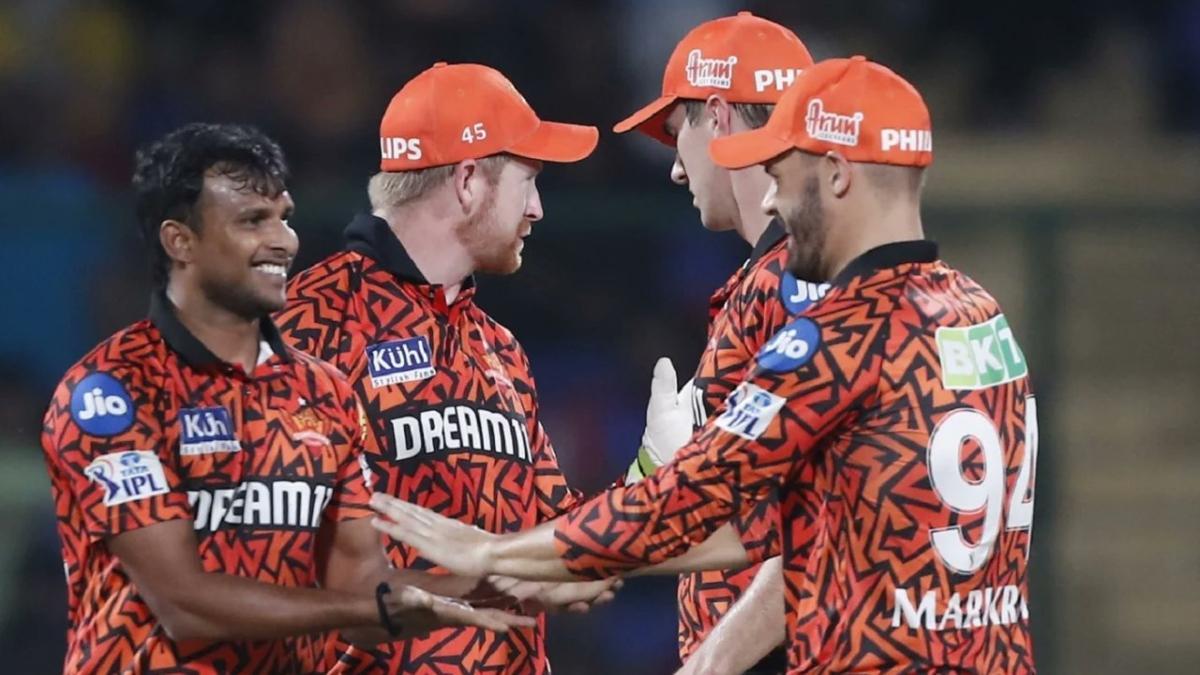(Cricket news) With the fewest wickets (13), the lowest combined average (54.00), and the lowest economy rate (11.20) of any spin-bowling club in the 2024 Indian Premier League, Sunrisers Hyderabad held the poorest record up until Friday. The second-worst spin attacks by those criteria, Chennai Super Kings (46.78) and Royal Challengers Bengaluru (9.93), were far worse than that average and economy rate.
SRH fielded a starting lineup in Qualifier 2 against Rajasthan Royals on Friday night that seemed to indicate they were trying to bowl as little spin as possible. They selected four specialist quicks, and this season, seam-bowling all-rounder Nitish Kumar Reddy was the bowler in their XI who had dismissed the most overs after those four.
RR won the toss and chose to bowl. SRH captain Pat Cummins said he would have preferred to bowl first too. Both teams expected dew to play a significant role later in the night and advantage the chasing team. This had been the case in the two playoff games in Ahmedabad – that venue had favoured the chasing side more than any other this season, giving them six wins in eight games.
Chennai, the venue for this game, had been the second-best chasing venue, with the team batting second winning five and losing two until Friday.
Before Friday, only two SRH spinners had breached the 20-over mark in IPL 2024. These two bowlers – Mayank Markande (11.77) and Shahbaz Ahmed (10.71) – had the worst economy rates of any spinner to have bowled that many overs.
Both started Friday night on the subs bench. It’s likely Markande, a legspinner who came into this game with eight wickets at an average of 32.37, was SRH’s first choice for Impact Player if things went well, or even reasonably well, with the bat. Shahbaz had only taken three wickets with his left-arm orthodox in 13 innings, at an average of 75.00.
Shahbaz had done a commendable job as a utility allrounder, but in ideal circumstances SRH wouldn’t have wanted to lean on his batting. They had a top seven full of fearsome ball-strikers, and in Cummins a more-than-useful end-overs hitter at No. 8.
If all went to plan for SRH, Shahbaz may have played no part in Qualifier 2 of IPL 2024. Things don’t always go to plan in T20. Randomness is an ever-present and frequently underplayed fact of the format. Seldom, though, does an entire match go off-script in the way Qualifier 2 did.
SRH picked a starting XI without a proper spinner. They ended up bowling nine overs of spin, the most they’ve bowled in any match this season. They ended up taking 5 for 57 in those nine overs.
Shahbaz, brought in as Impact Player more for his batting than his bowling after Sunrisers lost six wickets in their first 14 overs, completed his full four-over quota for the first time this season. Abhishek Sharma, who has the variety and bowling smarts to be a batting allrounder in a team prepared to use his bowling, bowled four overs too, having only bowled three previous overs all season. Aiden Markram, whose offspin hadn’t been used at all in IPL 2024 before Friday, chipped in with an over too.
All this after RR’s celebrated spin duo of R Ashwin and Yuzvendra Chahal took a combined 0 for 77 from their eight overs.
Who had any of this on their Qualifier 2 bingo card?
There can be days when the best bowlers go off the boil and part-timers bowl like geniuses. This wasn’t one of those days.
This, instead, was a day when conditions changed dramatically between innings. It routinely happens in Test cricket, and there are days when pitches wear significantly over the course of an ODI, such as the 1996 World Cup semi-final at Eden Gardens. It’s rare that a pitch can mutate over 40 overs like this one at the MA Chidambaram Stadium – a fresh surface used for the first time this season – did. The dew that both teams expected didn’t quite materialise, but it’s unlikely either team thought the ball would turn quite so much in the second innings if there was no dew.
Thanks to ball-tracking technology, it’s possible to say just how much the conditions changed.
At the start of the 16th over of RR’s chase, the broadcaster put up a graphic showing the average turn achieved during the two innings. RR’s spinners had generated 1.8 degrees of turn, and SRH’s a hair-raising 3.3 degrees.
Ashwin, batting at No. 6, played what may have been RR’s defining innings of the night. He faced three balls, all against Shahbaz. He attempted front-foot drives against two of them, both pitching on a genuinely full length, and was beaten both times on the outside edge by significant margins. Then he tried to cut one and edged to the wicketkeeper.
Sanju Samson and Kumar Sangakkara, RR’s captain and coach, refused to blame the conditions for their defeat, and felt 176 was a gettable target if their batters had made better choices. This may well have been the case, and it would certainly have helped them to have Yashasvi Jaiswal at the crease for longer. He fell for 42 off 21 in the first over of spin delivered by SRH, miscuing Shahbaz while looking for his second six of the over.
That wicket left Shahbaz and Abhishek bowling to a succession of right-right pairs, and the two left-arm spinners bowled 25 straight boundary-free balls following Jaiswal’s departure, that pressure contributing to RR losing three more wickets. RR’s chances all but evaporated in that time.
Having looked unhittable all this while, Shahbaz and Abhishek served up reminders late in their spells – cruel reminders from RR’s perspective – that they were still, respectively, a batting allrounder and a part-timer, feeding Dhruv Jurel half-volleys that he drove for three fours in two overs.
This strangest of T20 games, though, was already over as a contest.
Were SRH the “better” side on the night? Probably. They recovered from a crisis to post a competitive total on one pitch, and they shut RR out when they bowled on another. They were forced into a tactical choice that brought them unexpected dividends, but they were also quick to jump to their non-regular options when they realised how the pitch was behaving. The fact that they subbed out Travis Head rather than Abhishek suggested they may have foreseen a scenario where they needed a second left-arm spinner against a predominantly right-handed line-up.
SRH made the most of a favourable situation, and now find themselves in the IPL final. They deserve to be there for the season they’ve had, for playing a brand of T20 that’s hastened the evolution of the format and the language used to describe it, and for rewriting records and re-rewriting them. This wasn’t quite the way anyone thought they’d reach the final, and they’re unlikely to ever replicate this performance with this set of players, but what’s sport without a dash of the absurd?
Also read: SRH will play RR in the Qualifier 2 in IPL



